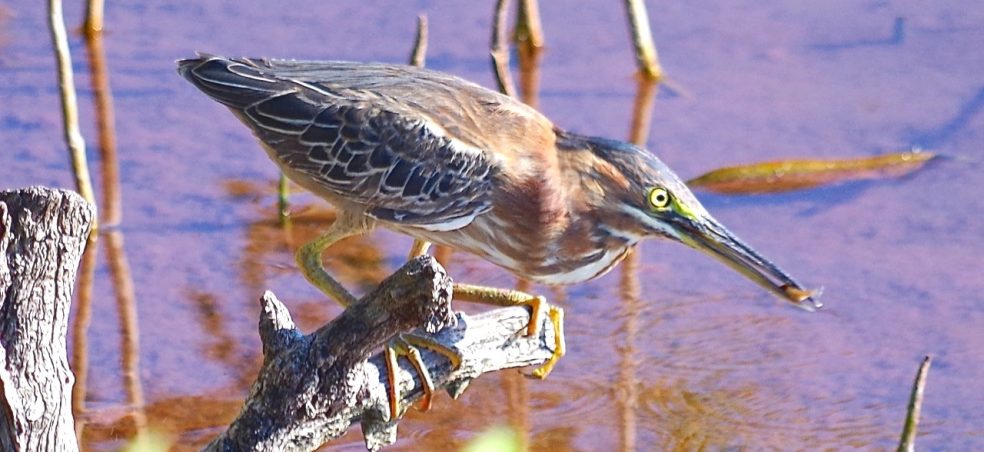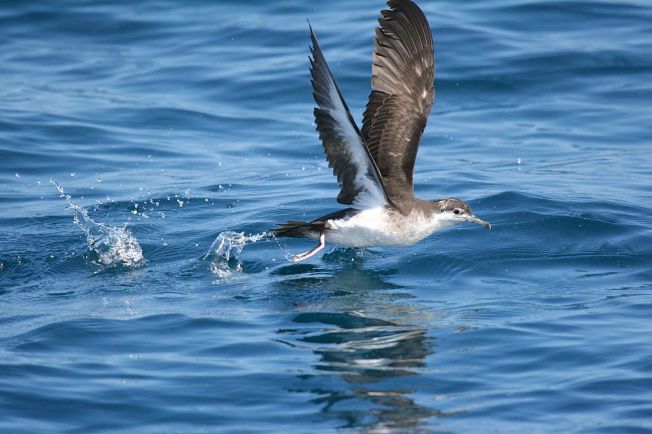AUDUBON’S SHEARWATER (DUSKY PETREL): SAD NEWS FROM ABACO
Just 2 short years ago, Abaco experienced a shearwater die-off event, when during a period of a week or so numerous dead and dying Great Shearwaters were washed up on many of Abaco’s beaches. You can read about it HERE and a follow-up HERE. This map shows the affected area in 2015.
Now comes news of another such sad event, with a large number of Audubon’s shearwaters (Puffinus lherminieri) appearing in the tideline and on beaches at Bahama Palm Shores, Casuarina, Winding Bay and doubtless elsewhere. Many are already dead. Some are still alive, but in a very poor state.
- Belong to the petrel family
- Named ‘Puffinus lherminieri’ after French naturalist Felix Louis L’Herminier
- Also known as the Dusky-backed Shearwater – or by Audubon as the Dusky Petrel
- Forages by diving out of flight or from the surface; or by surface-feeding
- Colony breeders, nesting in rock crevices, in burrows, or under thick vegetation
- Mated pairs spend much time together at nest site. They like rubbing bills together
- Their ‘twittering calls and mewing’ are usually only heard at night
Audubon’s ‘Dusky Petrel’
I’d be interested to hear any other accounts of the current event, especially of any recovery stories. By all means do this as a comment, or email me / PM on FB
Finally, for those who wonder how pioneer naturalists went about their work observing a species, collecting specimens and recording their findings, here is Audubon’s own account for the ‘Dusky Petrel’, Plate 299 in his magisterial work.
Dusky Petrel (Plate 299)
On the 26th of June, 1826, while becalmed on the Gulf of Mexico, off the western shores of Florida, I observed that the birds of this species, of which some had been seen daily since we left the mouth of the Mississippi, had become very numerous. The mate of the vessel killed four at one shot, and, at my request, brought them on board. From one of them I drew the figure which has been engraved (see above). The notes made at the time are now before me, and afford me the means of presenting you with a short account of the habits of this bird.
They skim very low over the sea in search of the floating bunches of marine plants, usually called the gulf weed, so abundant here as sometimes to occupy a space of half an acre or more. In proceeding, they flap their wings six or seven times in succession, and then sail for three or four seconds with great ease, having their tail much spread, and their long wings extended at right angles with the body. On approaching a mass of weeds, they raise their wings obliquely, drop their legs and feet, run as it were on the water, and at length alight on the sea, where they swim with as much ease as Ducks, and dive freely, at times passing several feet under the surface in pursuit of the fishes, which, on perceiving their enemy, swim off, but are frequently seized with great agility. Four or five, sometimes fifteen or twenty of these birds, will thus alight, and, during their stay about the weeds, dive, flutter, and swim, with all the gaiety of a flock of Ducks newly alighted on a pond. Many Gulls of different kinds hover over the spot, vociferating their anger and disappointment at not being so well qualified for supplying themselves with the same delicate fare. No sooner have all the fishes disappeared than the Petrels rise, disperse, and extend their flight in search of more, returning perhaps in awhile to the same spot. I heard no sound or note from any of them, although many came within twenty yards of the ship and alighted there. Whenever an individual settled in a spot, many others flew up directly and joined it. At times, as if by way of resting themselves, they alighted, swam lightly, and dipped their bills frequently in the water, in the manner of Mergansers.
I preserved the skins of the four specimens procured. One of them I sent to the Academy of Natural Sciences of Philadelphia, by Captain JOHN R. BUTLER, of the ship Thalia, then bound from Havana to Minorca. Two others were presented to my excellent friend Dr. TRAILL, on my first becoming acquainted with him at Liverpool.
I found the wings of this species strong and muscular for its size, this structure being essentially requisite for birds that traverse such large expanses of water, and are liable to be overtaken by heavy squalls. The stomach resembles a leather purse, four inches in length, and was much distended with fishes of various kinds, partially digested or entire. The oesophagus is capable of being greatly expanded. Some of the fishes were two and a half inches in length, and one in depth. The flesh of this Petrel was fat, but tough, with a strong smell, and unfit for food; for, on tasting it, as is my practice, I found it to resemble that of the porpoises. No difference is perceptible in the sexes.
While on board the United States revenue cutter Marion, and in the waters of the Gulf Stream opposite Cape Florida, I saw a flock of these birds, which, on our sailing among them, would scarcely swim off from our bows, they being apparently gorged with food. As we were running at the rate of about ten knots, we procured none of them. I have also seen this species off Sandy Hook.
Audubon’s Range Map for the species

Credits: thanks to those on Abaco who have been reporting this sad event over the last few days, and to Woody Bracey for his views; Dominic Sherony (wiki) for the header image; Keith Kemp for photos from Casuarina; Audubon.org for images, quote & range map; Richard Crossley / Crossley Guides for the composite picture; Audubon, wiki and random pickings for info about these birds









What a shame. 😔 Beautiful birds.
LikeLike
It is a shame. But it seems to be a ‘thing’ with shearwaters / petrels. The main worry is that the frequency seems to be increasing from rare to every other year. Not good. I blame humans.
LikeLike
The pic of the dead bird does not look like AUSH. What are the measurements?
On Jun 19, 2017 2:51 PM, “ROLLING HARBOUR ABACO” wrote:
> Rolling Harbour posted: ” AUDUBON’S SHEARWATER (DUSKY PETREL): SAD NEWS > FROM ABACO Just 2 short years ago, Abaco experienced a shearwater die-off > event, when during a period of a week or so numerous dead and dying Great > Shearwaters were washed up on many of Abaco’s beaches. You” >
LikeLike
Hi William, thanks for the helpful comment. You may well be right – within 24 hours of posting, a few reports of GRSH started to come in. I didn’t see the bird myself. For now, I’ve made a minor change from ‘bird’ to a generic ‘shearwater’. Whichever (though I know it’s good to be exact), the main illustrative point was to distinguish shearwaters from seagulls, for which these birds were being mistaken locally… I’ll probably write an update next week – reports are slowing and hopefully this sad event is coming to an end, All the best, RH
LikeLike